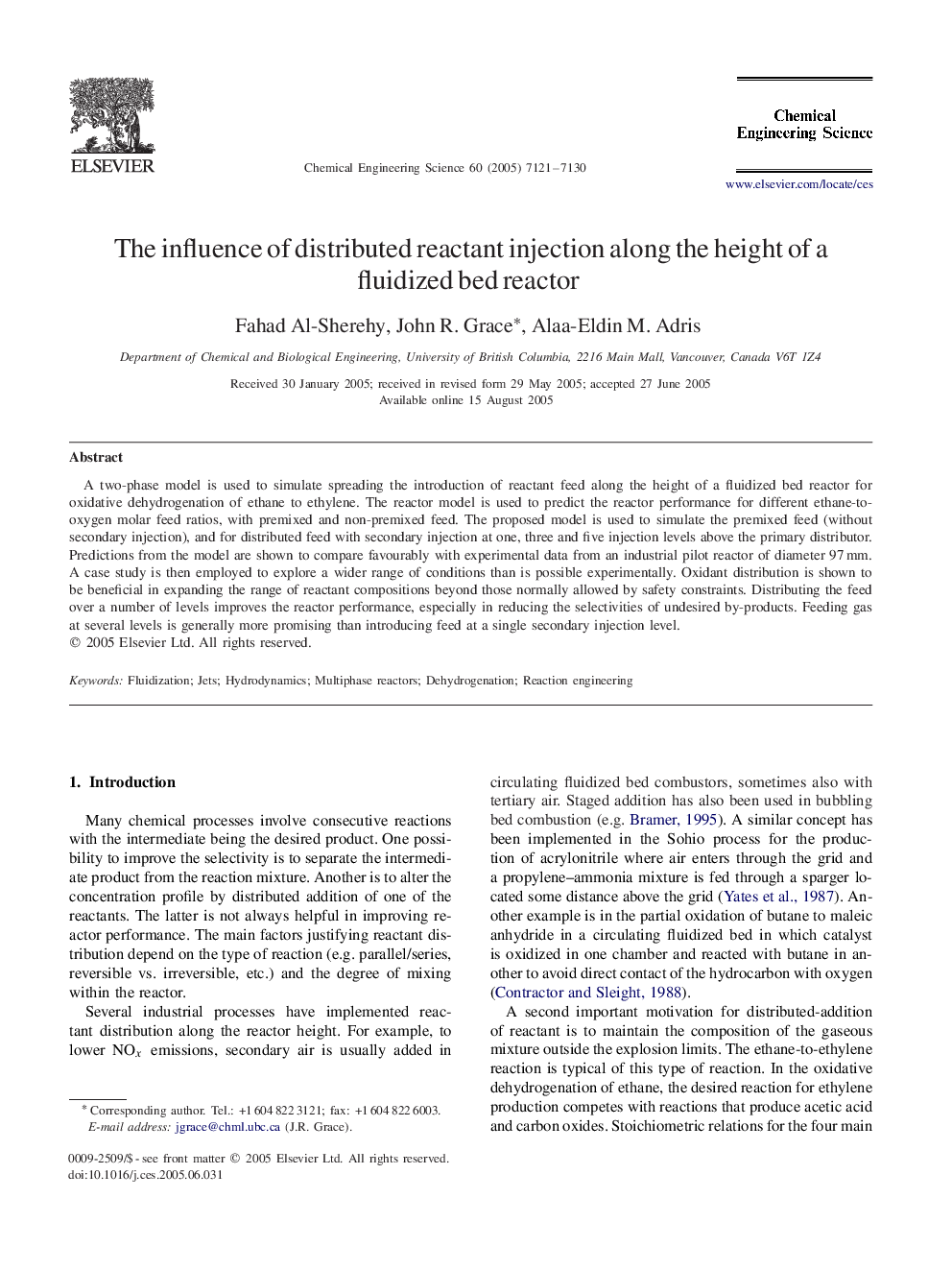| Article ID | Journal | Published Year | Pages | File Type |
|---|---|---|---|---|
| 160168 | Chemical Engineering Science | 2005 | 10 Pages |
A two-phase model is used to simulate spreading the introduction of reactant feed along the height of a fluidized bed reactor for oxidative dehydrogenation of ethane to ethylene. The reactor model is used to predict the reactor performance for different ethane-to-oxygen molar feed ratios, with premixed and non-premixed feed. The proposed model is used to simulate the premixed feed (without secondary injection), and for distributed feed with secondary injection at one, three and five injection levels above the primary distributor. Predictions from the model are shown to compare favourably with experimental data from an industrial pilot reactor of diameter 97 mm. A case study is then employed to explore a wider range of conditions than is possible experimentally. Oxidant distribution is shown to be beneficial in expanding the range of reactant compositions beyond those normally allowed by safety constraints. Distributing the feed over a number of levels improves the reactor performance, especially in reducing the selectivities of undesired by-products. Feeding gas at several levels is generally more promising than introducing feed at a single secondary injection level.
